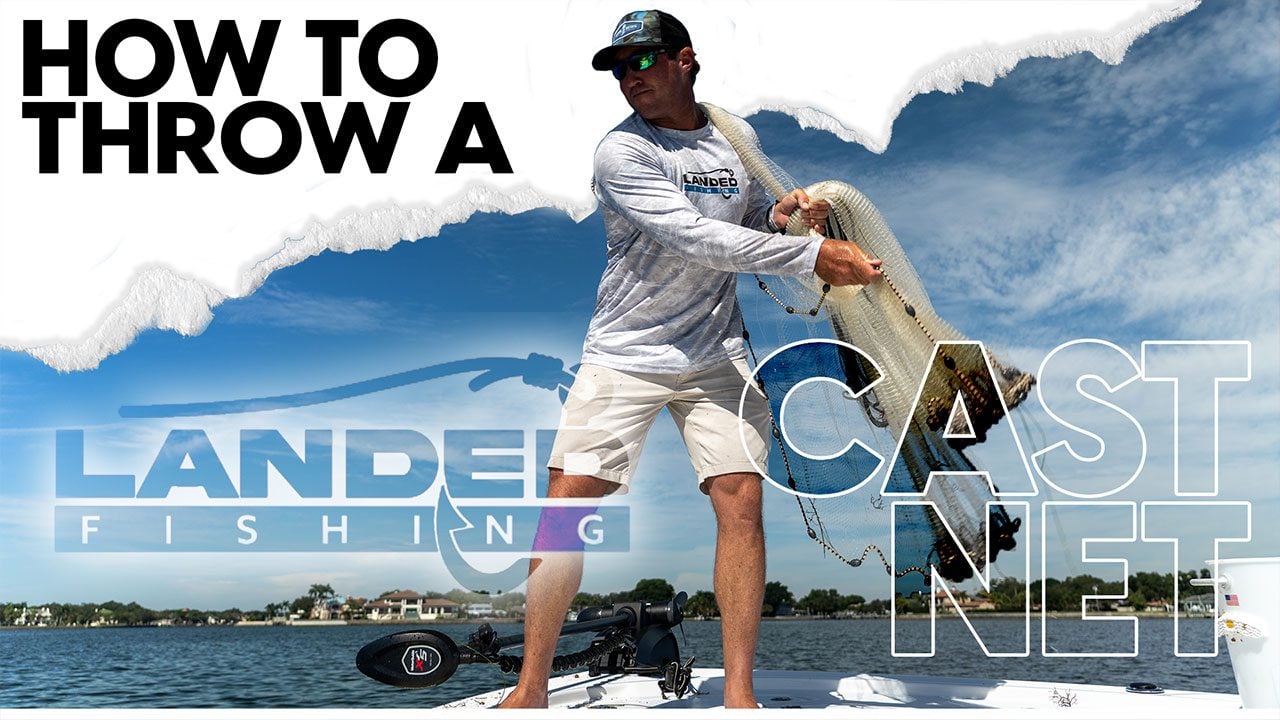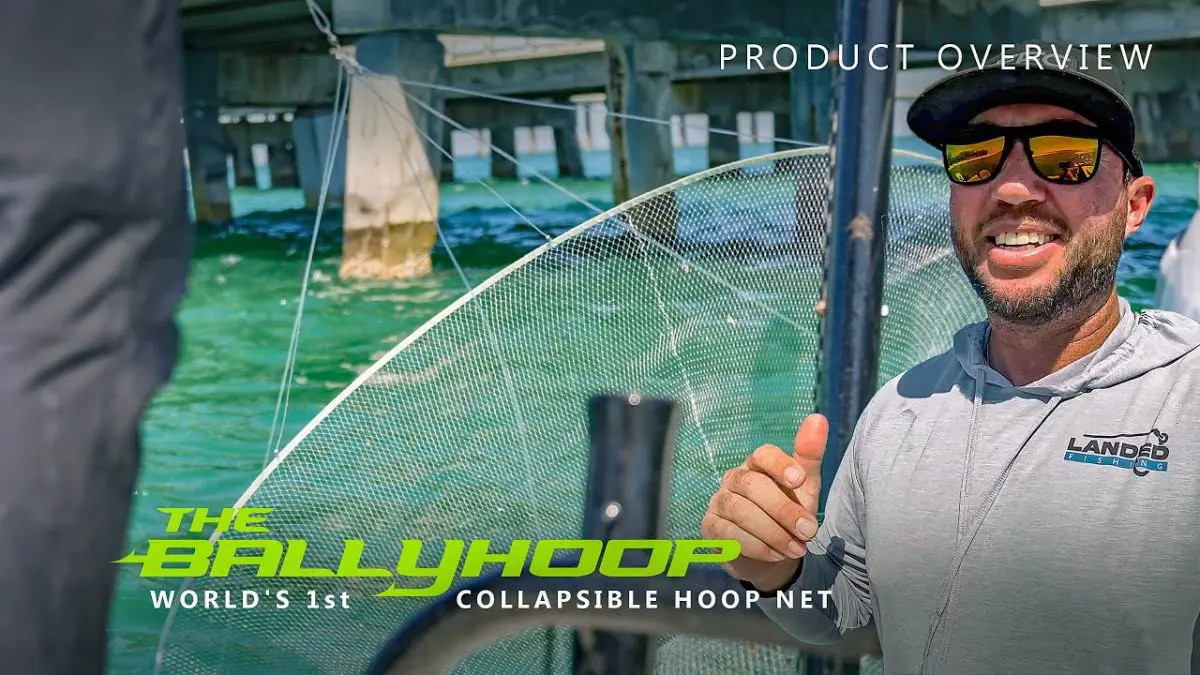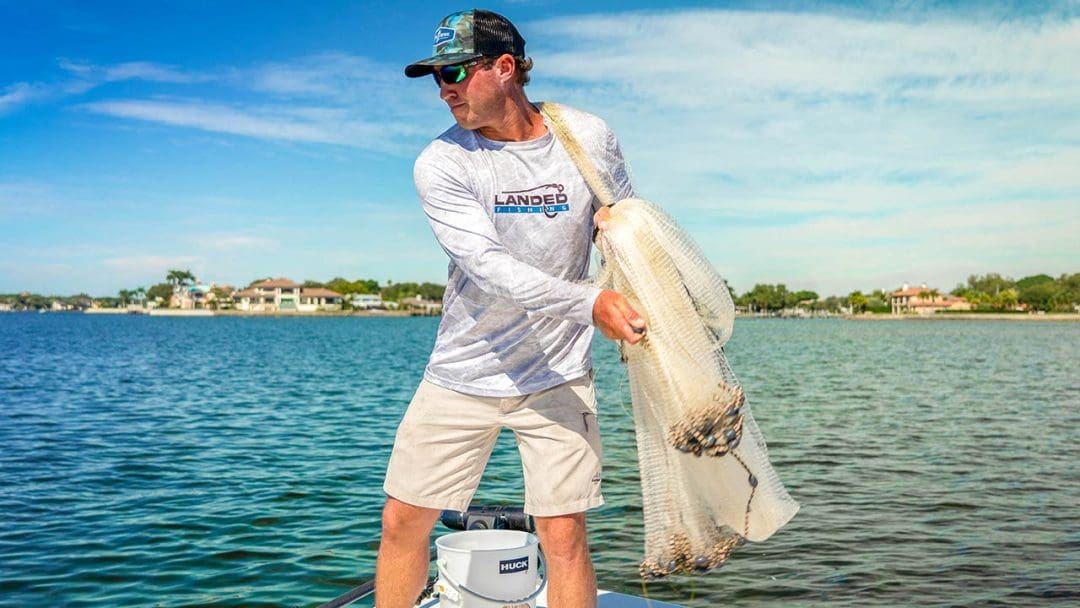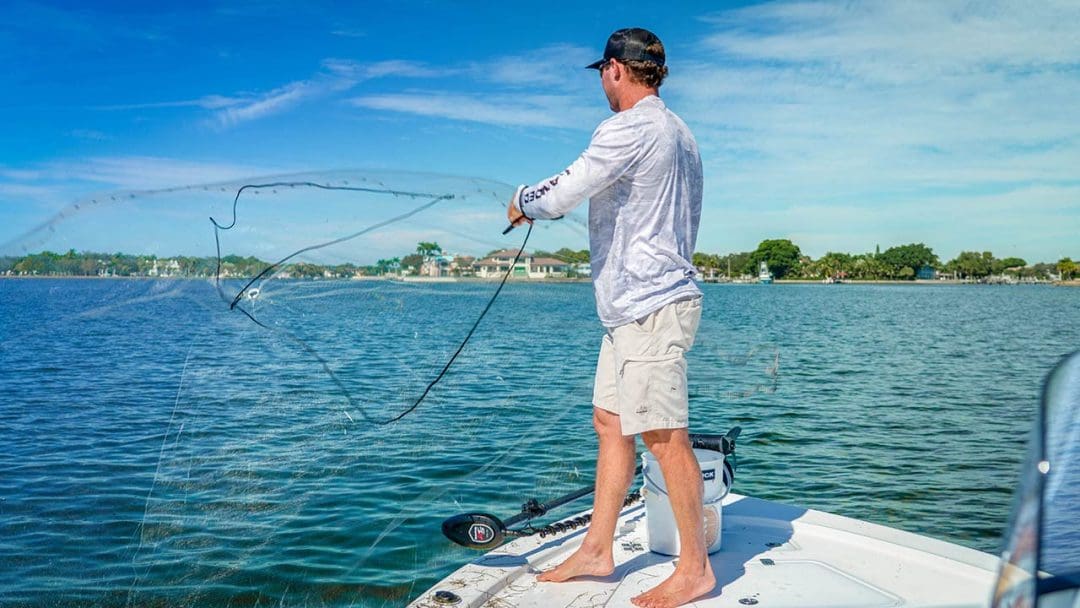Learning to Throw a Cast Net like a Seasoned Angler
Easy-to-follow instructions, expert advice, and practical tips will help you master the art of cast net fishing, whether you’re a beginner or a seasoned pro.
Watch Video:
How to Throw a Cast Net
(Triple Load Method)
Cast Net Alternative The BallyHoop Net
The BallyHoop nets offer innovative solutions as well as an alternative to traditional cast nets for anglers seeking efficient live bait capture.
Throwing a Cast Net:
Triple Load Method
Effective triple load throw with a cast net, this method helps to maximize your net’s spread and increase your catch.
About the Triple Load Method
The cast net throwing method that I use is called the triple load.
This cast net method was the easiest way for me to quickly learn how to throw a large cast net.
It is called the triple load because the net is broken into 3 parts. Master the load and then just throw.
Casting a net is an ancient and highly effective fishing technique used by generations of anglers.
The triple load throw, a method designed to maximize the net’s spread and capture potential, is a skill that every cast net enthusiast should learn.
Easiest ways to throw a cast net.
What You’ll Need…
Step 1: Gather Your Equipment
Before you begin, ensure you have the following equipment:
- A cast net: Choose a net size suitable for your target fish and local regulations.
- A bucket or container: For storing the net when not in use.
Step 2: Prepare Your Cast Net
- Inspect the net for tangles or damage. Make sure the weights are evenly distributed along the net’s edge.
- Coil the handline, starting from the net’s attachment point and working your way up to the wrist loop. Secure the coiled line in your throwing hand.
- Put the wrist loop around your throwing arm’s wrist, ensuring it fits snugly and securely.
How to Throw a Cast Net
The triple load method offers a straightforward approach to throw a cast net.
To start, hold the net’s brim with both hands, palms facing upward.
Gather the net into three equal sections, or “loads,” ensuring the lead line is positioned at the bottom of the circle.
With a gentle swing, release the first load, allowing it to spread out. As the net begins to descend, simultaneously release the second load, followed by the third load.
The sequential release of the loads creates a cascading effect, allowing the net to open quickly and evenly.
Timing is key; ensure your release is coordinated with the net’s descent for a successful spread. With practice, mastering the triple load technique can transform your cast net throws into precise and efficient actions, enhancing your fishing experience.
Triple Load Method
(Step-by-Step)
A highly effective technique that involves dividing the net into three sections for a wider and more controlled throw.
Mastering the Triple Load Cast Net Throw: A Step-by-Step Guide
Step 1: Load the Net
- With your throwing hand, grab the horn of the net (the top part where the lines meet).
- Divide the net into three equal sections by gathering the netting and weights. Hold the first section (closest to the horn) with your throwing hand, next to the coiled handline.
- Transfer the second section to your non-throwing hand, holding it away from your body.
- With your throwing hand, grab the third section (closest to the lead line), and let the net hang evenly.
Step 2: The Triple Load Throw
- Position your feet shoulder-width apart, with your non-throwing foot slightly forward. Keep your knees slightly bent for stability.
- Swing your non-throwing arm forward, releasing the second section of the net at the peak of the swing. Simultaneously, swing your throwing arm in the opposite direction, away from your body.
- As your throwing arm comes forward, release the first section of the net, followed immediately by the third section.
- Aim to release the sections in a smooth, fluid motion, with the net opening up like a parachute. The triple load technique should create a wide, circular spread as the net falls onto the water.
Step 3: Retrieve Your Net
- After the net has settled on the water, wait a few moments for fish to become trapped.
- Slowly and steadily, pull the handline, making sure not to jerk or disturb the net unnecessarily. The net’s weights will close, trapping the fish.
- Haul the net onto your boat or shore, and carefully remove your catch.
The triple load cast net throw is an excellent method to improve your net’s spread and increase your chances of a successful catch.
What are the Advantages of a Cast Net?
A cast net offers a range of advantages that make it a popular and effective tool for various fishing endeavors.
Cast Nets for Baitfish
Cast nets are a popular fishing gear used by anglers to catch fish in shallow waters.
There are several types of cast nets, each designed for a specific fishing technique and target species.
Cast Net Hole Sizes
Cast nets are popular tools used by fishermen to catch baitfish and other small aquatic creatures.
The size of the holes in a cast net plays a crucial role in determining the type and size of bait it can effectively catch.
Cast net hole sizes and the ideal bait they are intended to catch:
Small Hole Cast Nets (3/8 inch to 1/2 inch):
These nets have smaller holes and are primarily designed for catching tiny baitfish like silversides, anchovies, or small minnows.
The small hole size prevents these smaller baitfish from escaping the net.
Medium Hole Cast Nets (1/2 inch to 3/4 inch):
Medium hole cast nets strike a balance between capturing small baitfish and allowing water to flow through.
They are suitable for catching a variety of baitfish, such as mullet, finger mullet, pinfish, or pilchards.
Large Hole Cast Nets (3/4 inch to 1 inch):
Nets with larger holes are generally used for catching larger baitfish, such as menhaden, shad, or larger mullet.
The larger openings allow for easier retrieval of the net, especially when targeting larger species.
How Much Are Cast Nets?
The price of cast nets can vary by style, size, manufacturer and even location. Generally, cast nets are available at a range of prices to suit different budgets and preferences.
Basic/ Entry Level/ Small Cast Nets: $20-$50
Basic cast nets designed for small-scale fishing or recreational purposes can be found at relatively affordable prices, typically ranging from $20 to $50.
These nets are usually made with simpler materials and may have a smaller diameter and mesh size.
Professional-Grade Cast Nets: $50-$200
Professional-grade cast nets, favored by experienced anglers and commercial fishermen, can cost anywhere from $50 to over $200.
Notice, as we move up the price spectrum, more durable and high-quality cast nets with larger sizes and finer mesh materials become available.
How to Quickly Clean a Cast Net
Another popular way to throw a Cast Net:
Pancake Throw Method
(Step-by-Step)
A popular technique that results in the net opening into a large, flat circle, resembling a pancake, to cover a broader area.
The Pancake Method is a popular and efficient technique for throwing a cast net, resulting in a wide, flat circular spread that maximizes your chances of a successful catch. This step-by-step guide will help you master the Pancake Method and improve your cast net throwing skills.
Step 1: Load the Net for the Pancake Method
- With your throwing hand, grab the horn of the net (the top part where the lines meet).
- Use your free hand to gather the net halfway down, holding the net in one large loop.
- Transfer half of the net’s loop to your throwing hand, holding both the horn and the midsection of the net.
- Finally, grab the lead line with your free hand, ensuring the weights are evenly distributed.
Step 2: Execute the Pancake Throw
- Position your feet shoulder-width apart, with your non-throwing foot slightly forward. Keep your knees slightly bent for stability.
- Begin by swinging your throwing arm back, while simultaneously stepping forward with your non-throwing foot.
- As you swing your throwing arm forward, release the net with a smooth, underhand motion. Aim to release the net at eye level.
- Follow through with your throw, ensuring your wrist flicks outwards, which helps the net to open up like a pancake as it sails through the air.
Step 3: Retrieve Your Net
- After the net has settled on the water, wait a few moments for fish to become trapped.
- Slowly and steadily, pull the handline, making sure not to jerk or disturb the net unnecessarily. The net’s weights will close, trapping the fish.
- Haul the net onto your boat or shore, and carefully remove your catch.
The Pancake Method is an effective and simple technique to achieve a wide, circular spread with your cast net.
Explore More Fishing How-To’s

Tampa Florida's Skyway Bridge Fishing Pier Join us as we team up with GrouperMVP, The Ballyhoop Net and the…

Tampa Bridge Fishing using Crab for Monster Fish Join the crew with Hog Squad Fishing and Tsunami Tackle as…

Catching Pass Crabs for Tarpon Season Welcome to another thrilling adventure with Captain Randall and his crew, where we're…





